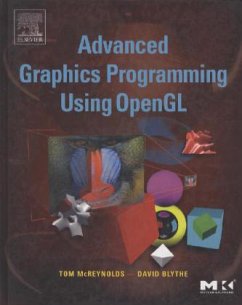Today truly useful and interactive graphics are available on affordable computers. While hardware progress has been impressive, widespread gains in software expertise have come more slowly. Information about advanced techniques-beyond those learned in introductory computer graphics texts-is not as easy to come by as inexpensive hardware.
This book brings the graphics programmer beyond the basics and introduces them to advanced knowledge that is hard to obtain outside of an intensive CG work environment. The book is about graphics techniques-those that don't require esoteric hardware or custom graphics libraries-that are written in a comprehensive style and do useful things. It covers graphics that are not covered well in your old graphics textbook. But it also goes further, teaching you how to apply those techniques in real world applications, filling real world needs.
Emphasizes the algorithmic side of computer graphics, with a practical application focus, and provides usable techniques for real world problems.
Serves as an introduction to the techniques that are hard to obtain outside of an intensive computer graphics work environment.
Sophisticated and novel programming techniques are implemented in C using the OpenGL library, including coverage of color and lighting; texture mapping; blending and compositing; antialiasing; image processing; special effects; natural phenomena; artistic and non-photorealistic techniques, and many others.
This book brings the graphics programmer beyond the basics and introduces them to advanced knowledge that is hard to obtain outside of an intensive CG work environment. The book is about graphics techniques-those that don't require esoteric hardware or custom graphics libraries-that are written in a comprehensive style and do useful things. It covers graphics that are not covered well in your old graphics textbook. But it also goes further, teaching you how to apply those techniques in real world applications, filling real world needs.
Emphasizes the algorithmic side of computer graphics, with a practical application focus, and provides usable techniques for real world problems.
Serves as an introduction to the techniques that are hard to obtain outside of an intensive computer graphics work environment.
Sophisticated and novel programming techniques are implemented in C using the OpenGL library, including coverage of color and lighting; texture mapping; blending and compositing; antialiasing; image processing; special effects; natural phenomena; artistic and non-photorealistic techniques, and many others.
"I've been using the techniques in this book since their introduction at SIGGRAPH years ago. Those notes, transformed into this superb book, have been the quintessential reference for advanced techniques in OpenGL. Every corner of the subject is analyzed, with enough detail for the expert, but also very readable for the novice. Congratulations to David and Tom for providing an excellent OpenGL reference!"--Dave Shreiner, Silicon Graphics, Inc., co-author of OpenGL Programming Guide "You may think you know OpenGL. As a software engineer with ten years of OpenGL experience, I thought I did. However, this book quickly convinced me that I was very much mistaken. David Blythe and Tom McReynolds have taught me much that I did not know, and in the process improved my company's products. This is a book for computer graphics enthusiasts, both amateur and professional. If you use OpenGL in your work, Advanced Graphics Programming using OpenGL will be your constant companion. Be sure to get your own copy, however - my copy is not leaving my desk under any circumstances!"--Ian Ashdown, President, byHeart Consultants Limited "Today truly useful and interactive graphics are available on affordable computers. While hardware progress has been impressive, widespread gains in software expertise has come more slowly. Information about advanced techniques beyond those learned in introductory computer graphics texts is not as easy to come by as inexpensive hardware. This book brings the graphics programmer beyond the basics and introduces them to advanced knowledge that is hard to obtain outside of an intensive CG work environment. The book is about graphics techniques those that don't require esoteric hardware or custom graphics libraries that are written in a comprehensible style and do useful things. It covers graphics that are not covered well in your old graphics textbook. But it also goes further, teaching you how to apply those techniques in real world applications, filling real world needs. Emphasizes the algorithmic side of computer graphics, with a practical application focus, and provides usable techniques for real world problems. Serves as an introduction to the techniques that are hard to obtain outside of an intensive computer graphics work environment. Sophisticated and novel programming techniques are implemented in C using the OpenGL library, including: coverage of color and lighting; texture mapping; blending and compositing; antialiasing; image processing; special effects; natural phenomena; artistic and non-photorealistic techniques, and many others. Code fragments are used in the book, and full blown example programs for virtually every algorithm are available at www.mkp.com/opengl." -- Gamedev.net

